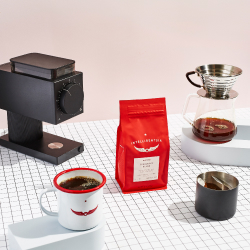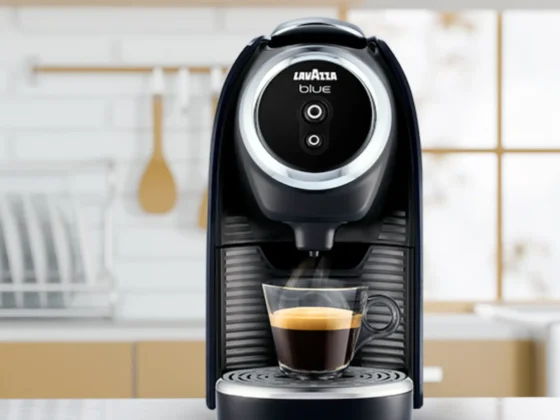In the coffee wide spectrum, two variations have risen to prominence for those who prefer their caffeine cold. This article delves into the nuances of cold brew and its nitro variation, helping you discern which one aligns with your coffee preferences. From their unique brewing processes and flavor profiles to caffeine content and health considerations, we explore the defining characteristics of each. Whether you’re a coffee aficionado or a curious newcomer, understanding the differences of Nitro Cold Brew vs Cold Brew is essential in choosing your ideal iced coffee experience.
Nitro vs Cold Brew: Key Differences
- Brewing Process: Cold brew is made by steeping coffee grounds in cold water for an extended period, while the Nitro version takes this base and infuses it with nitrogen gas.
- Texture and Mouthfeel: The Nitro brew is known for its smooth, creamy texture due to the nitrogen infusion, contrasting with the straightforward, smoother texture of traditional cold brew.
- Flavor Profile: Cold brew generally has a sweet, mellow flavor with low acidity, whereas the Nitro version often exhibits a richer, more intense taste with an enhanced perceived sweetness.
- Visual Appeal: the Nitro brew features a distinctive cascading effect and a frothy head, akin to some draft beers, which is absent in the more straightforward appearance of cold brew.
- Serving Method: The Nitro brew is typically served from a keg or special tap system to maintain its unique texture, while cold brew can be served simply over ice from any container.
- Caffeine Content: Both have higher caffeine levels than regular hot coffee, but the exact amount can vary based on brewing and serving methods, with cold brew often having slightly more due to its concentration.
What is Cold Brew Coffee?
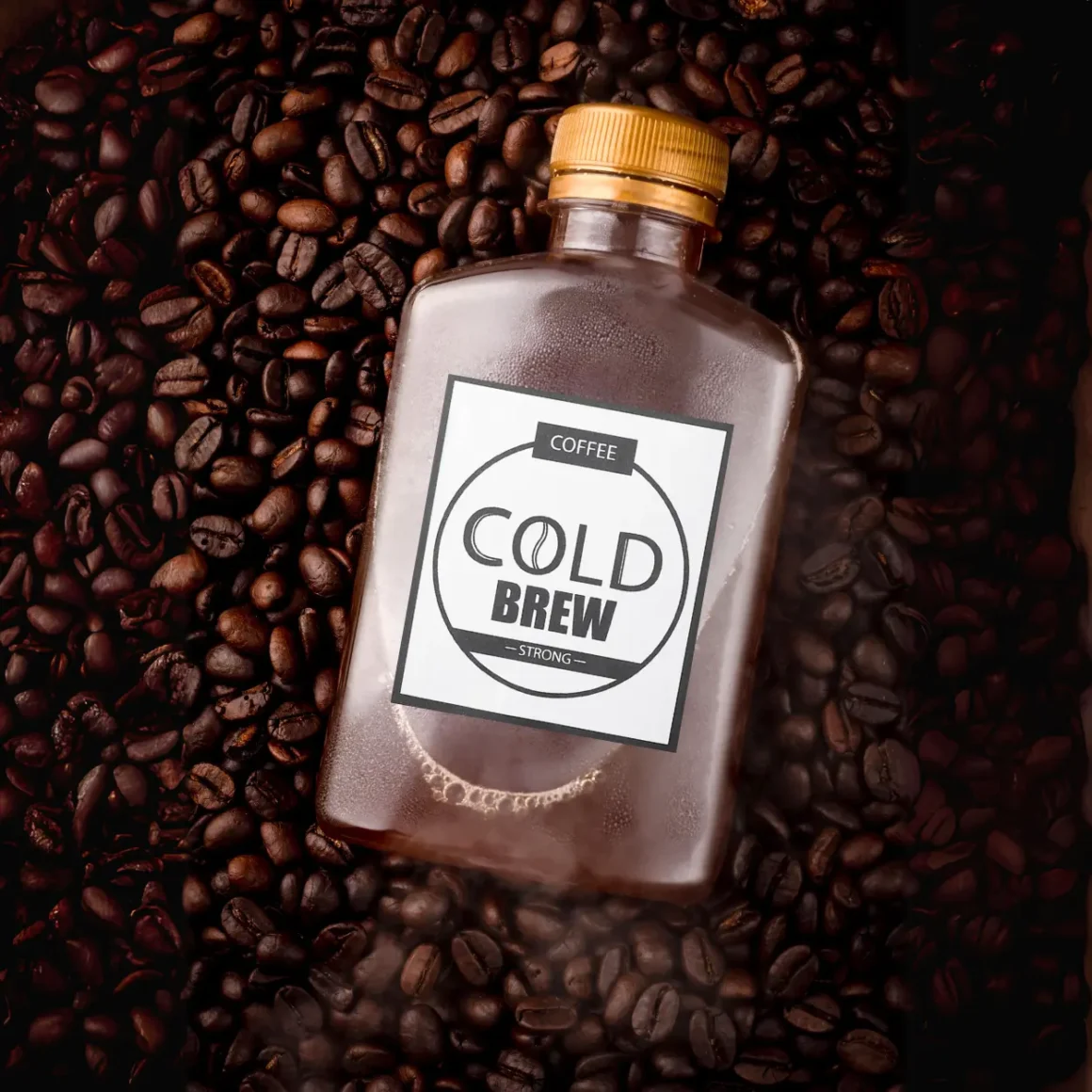
Cold brew, also called cold pressing is a unique and increasingly popular way to enjoy coffee. Unlike traditional hot brewing methods, This coffee-making technique entails immersing coarsely ground coffee beans in cold water for an extended duration, usually spanning from 12 to 24 hours. This process results in a coffee concentrate that can be diluted with water or milk and served over ice. The key characteristics of this beverage include:
- Flavor Profile: This brewing method yields a smooth, sweet, and less acidic taste compared to hot brewed coffee. This is because the cold water extracts different chemical compounds from the coffee beans.
- Versatility: This coffee can be customized according to personal preference, ranging from a strong, concentrated form to a milder, more diluted version. It’s also a versatile base for a variety of coffee beverages.
- Shelf Life: One of the advantages of this type of coffee is its longer shelf life. When stored in a refrigerator, it can remain fresh and flavorful for up to two weeks.
What is Nitro Cold Brew?
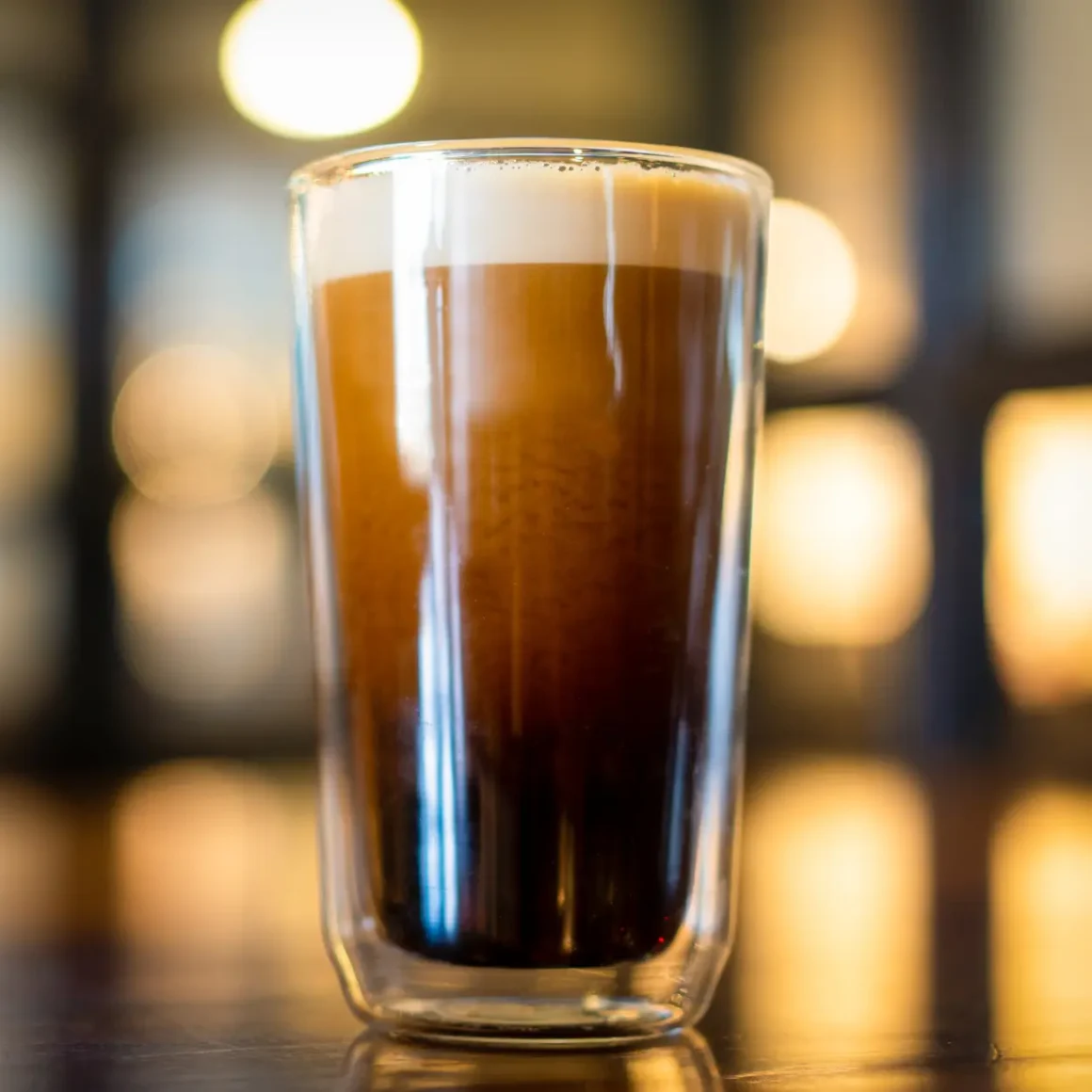
The Nitro brew is made by infusing the cold pressing with nitrogen gas, creating a rich, creamy texture and a visually appealing cascading effect when poured. (1) The unique features of this brew include:
- Texture and Appearance: Nitrogen infusion gives this beverage a silky mouthfeel and a frothy head, similar to that of some draft beers. The cascading effect of the nitrogen bubbles is both a visual and sensory delight.
- Flavor Enhancements: The nitrogen infusion not only affects the texture but also enhances the inherent flavors of the coffee, making it taste smoother and sweeter without the need for added sugar.
- Popularity: Gaining popularity in coffee shops and among coffee enthusiasts, this nitro-infused coffee is often appreciated for its unique presentation and the novelty of the experience it offers.
Both beverages represent innovative approaches to coffee preparation, catering to a wide range of preferences and offering distinct flavor profiles and experiences.
The Rising Popularity of Cold Coffee Drinks
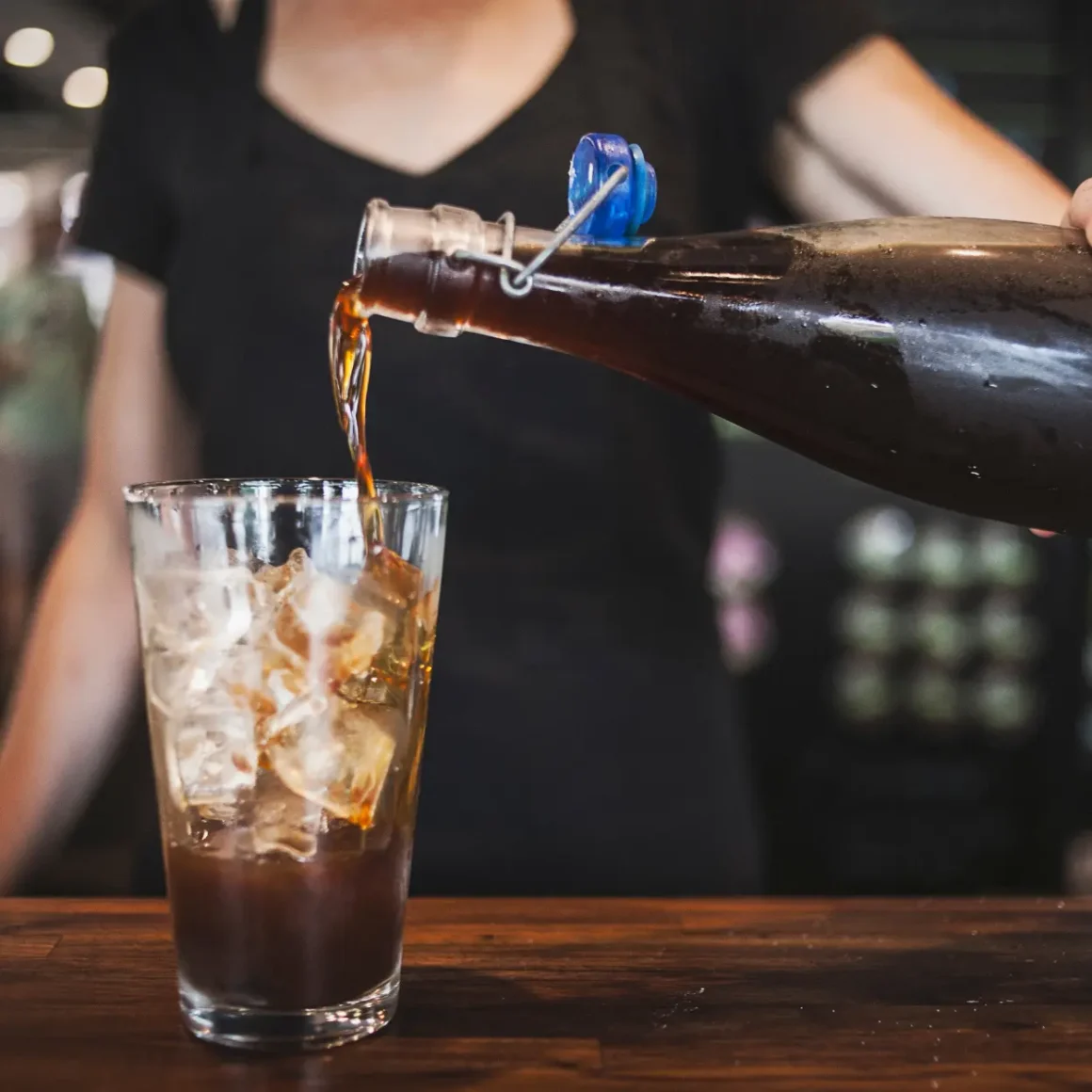
The trend of cold coffee drinks has been gaining remarkable momentum in recent years, reshaping the coffee culture worldwide. This surge in popularity can be attributed to several factors:
- Variety and Innovation: The introduction of diverse cold coffee beverages, including cold brew and its nitro variation, has expanded consumer choices. While both are cold coffee types, nitro coffee is infused with nitrogen, giving it a creamy texture and frothy top, whereas cold pressing is known for its smooth, concentrated flavor.
- Seasonal Flexibility: Cold coffee drinks have become a year-round preference for many, not just a summer treat. Their refreshing quality caters to those looking for an alternative to hot coffee, especially in warmer climates or seasons.
- Health and Wellness Trends: Cold brew coffee, in particular, is often perceived as a healthier option due to its lower acidity and smoother taste. This appeals to health-conscious consumers looking for enjoyable yet beneficial beverages.
- Convenience and Accessibility: The availability of ready-to-drink cold coffee options in supermarkets and coffee shops makes it easy for consumers to enjoy these beverages without the need for brewing equipment.
- Social Media Influence: The visual appeal of cold coffee drinks, especially nitro coffee with its distinctive cascade effect, has made them popular on social media platforms. This visibility has played a significant role in their rising popularity.
In summary, the increasing popularity of cold coffee drinks is a testament to the evolving preferences of coffee drinkers. They offer a refreshing alternative to traditional hot coffee, aligning with contemporary health trends, aesthetic appeal, and the desire for diverse and convenient beverage options.
Brewing Process
The art of brewing coffee has evolved with new techniques and flavors, particularly in the realm of these beverages. Understanding the brewing process of each is key to appreciating their unique characteristics.
How to Make Cold Brew Coffee
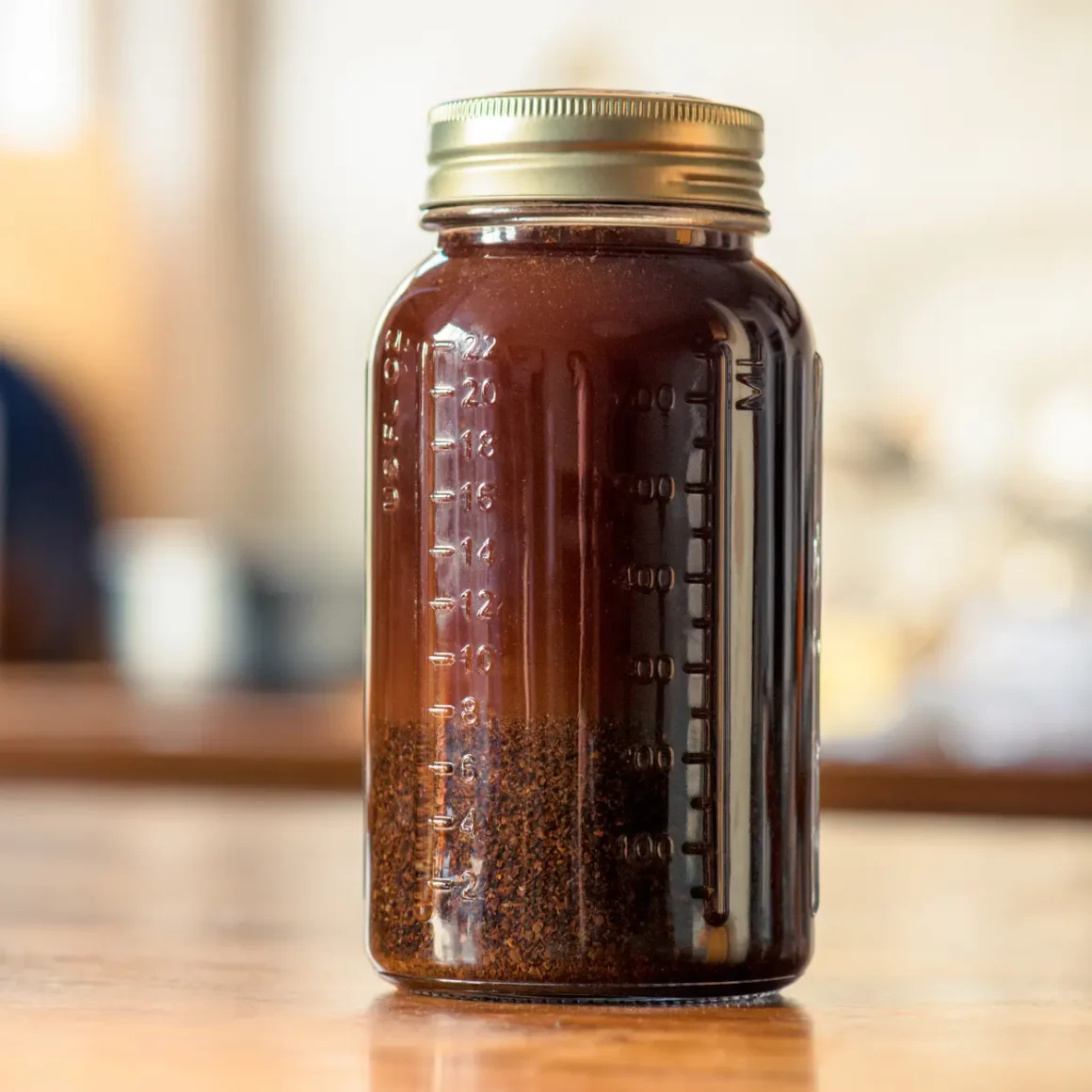
Learning how to make cold brew coffee involves a straightforward yet distinct process:
- Coarse Grinding: Start by coarsely grinding fresh coffee beans to ensure even water exposure during steeping.
- Steeping: Combine the grounds with cold water in a jar or pitcher. The typical ratio is about 1:8 (coffee to water).
- Duration: Allow the mixture to steep at room temperature or in a refrigerator for 12-24 hours, depending on desired strength.
- Straining: After steeping, strain the coffee using a filter or a fine mesh to remove the grounds.
- Serving: Serve the concentrate diluted with water or milk, over ice. Sweeteners and flavors can be added as desired.
How to Make Cold Brew Nitro Coffee
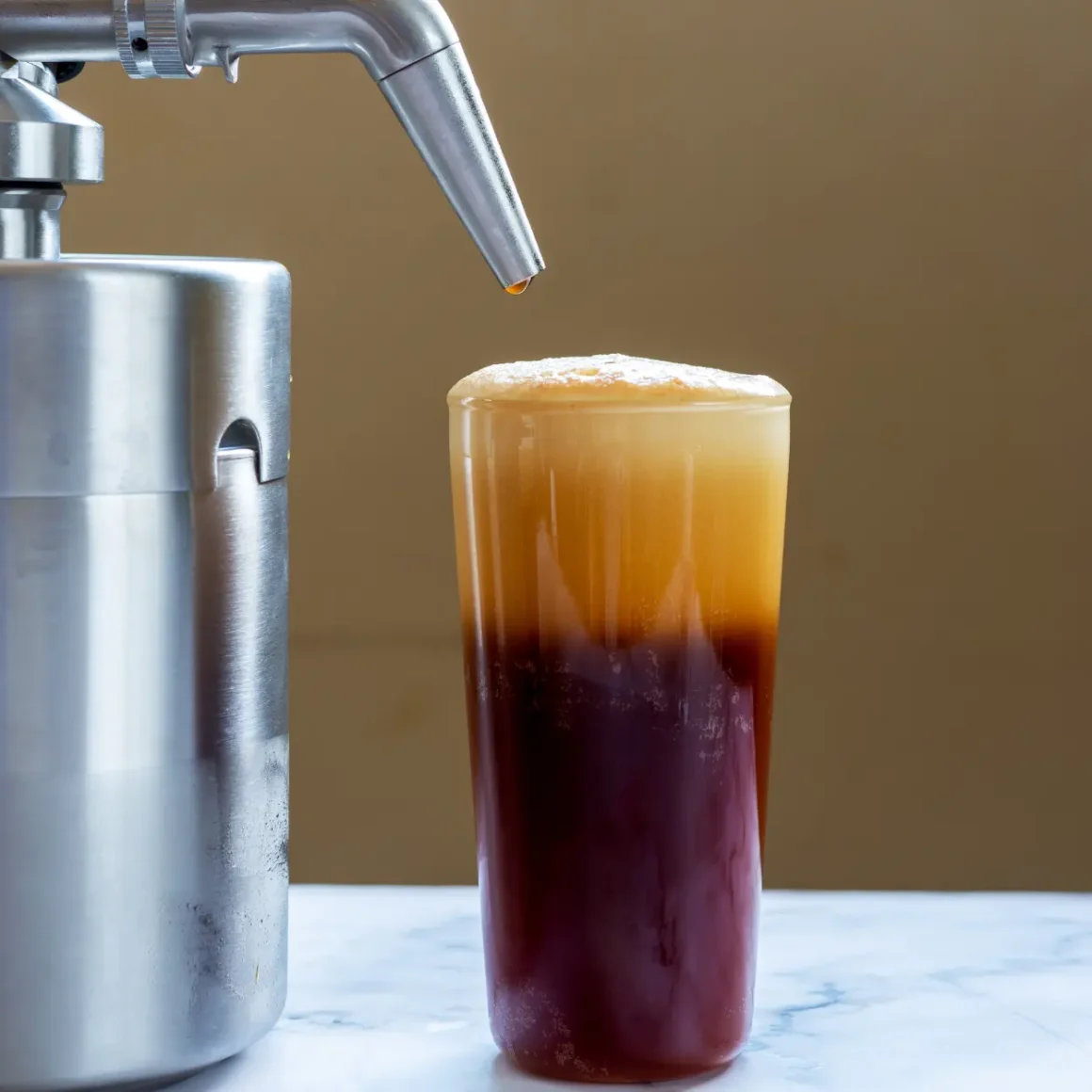
The process of how to make cold brew nitro coffee involves an additional nitrogen infusion step:
- Prepare Cold Brew: Start with a concentrated cup of this brew, prepared as mentioned above.
- Nitrogen Infusion: The beverage is then infused with nitrogen gas. This is typically done using a nitro cold brew maker or keg system.
- Serving: Serve immediately from the tap to enjoy the creamy texture and cascading effect typical of nitro beverages.
Key Differences in Brewing Methods
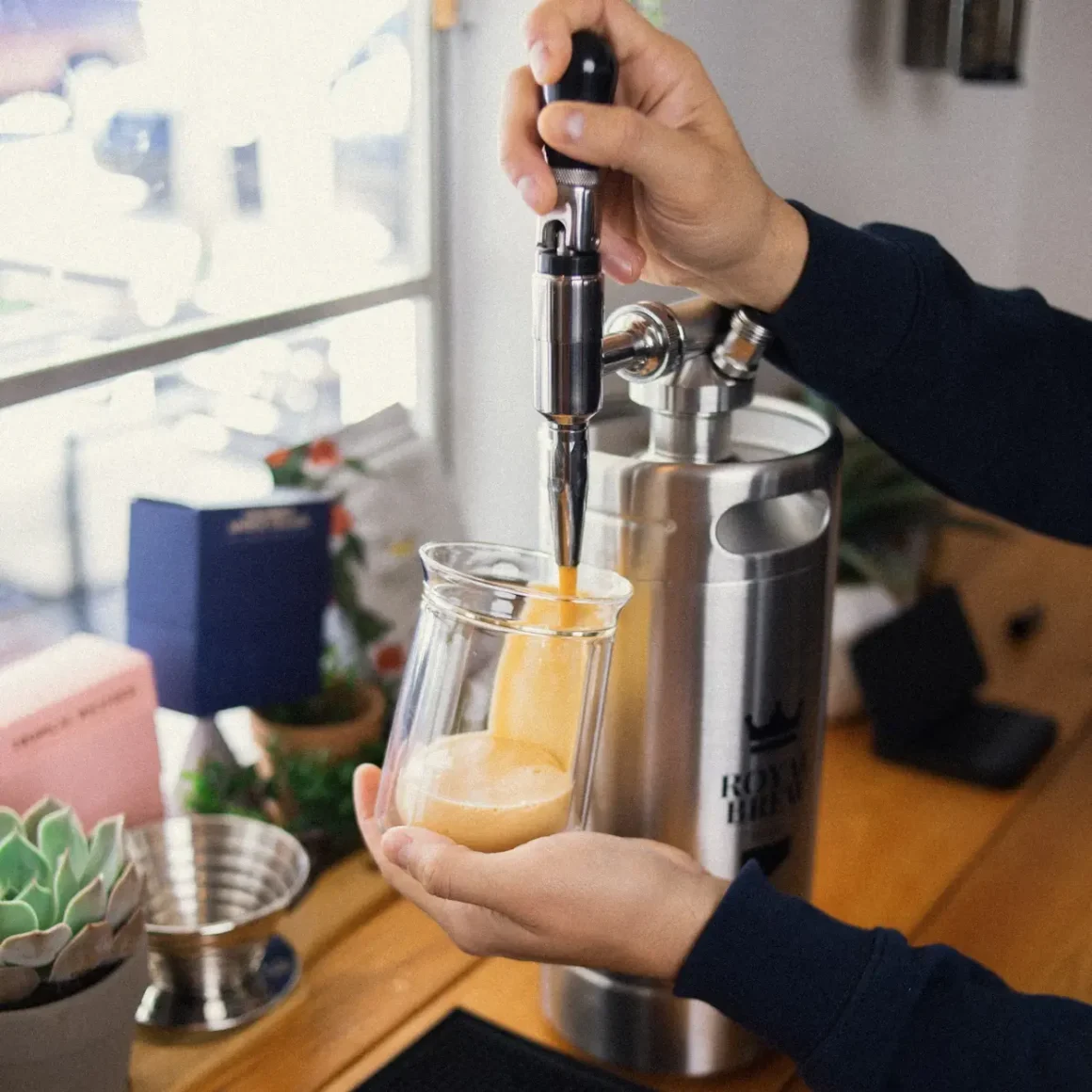
The brewing methods for these beverages have distinct differences:
- Texture and Presentation: Nitro coffee is infused with nitrogen, giving it a creamy texture and a unique cascading effect when poured.
- Equipment: Making nitro coffee requires specialized equipment like a nitro cold brew maker or a keg system for nitrogen infusion, whereas cold brew coffee can be made with basic kitchen tools.
- Flavor Profile: While both have a smoother and sweeter profile than hot coffee, the nitrogen in nitro cold brew enhances these characteristics, often making it taste richer.
- Serving Method: Cold pressing is versatile and can be served in various ways, but the nitro version is best served fresh from the tap to maintain its distinctive texture.
In essence, while both beverages start with the same foundation, the nitrogen infusion in nitro coffee offers a unique sensory experience, differing in texture, taste, and serving style.
Flavor Profile
Understanding the flavor profile of different coffee types is essential for coffee enthusiasts and casual drinkers alike. Both of these coffee drinks, while related, offer unique taste experiences influenced by their brewing processes and ingredients.
Cold Brew Flavor Characteristics
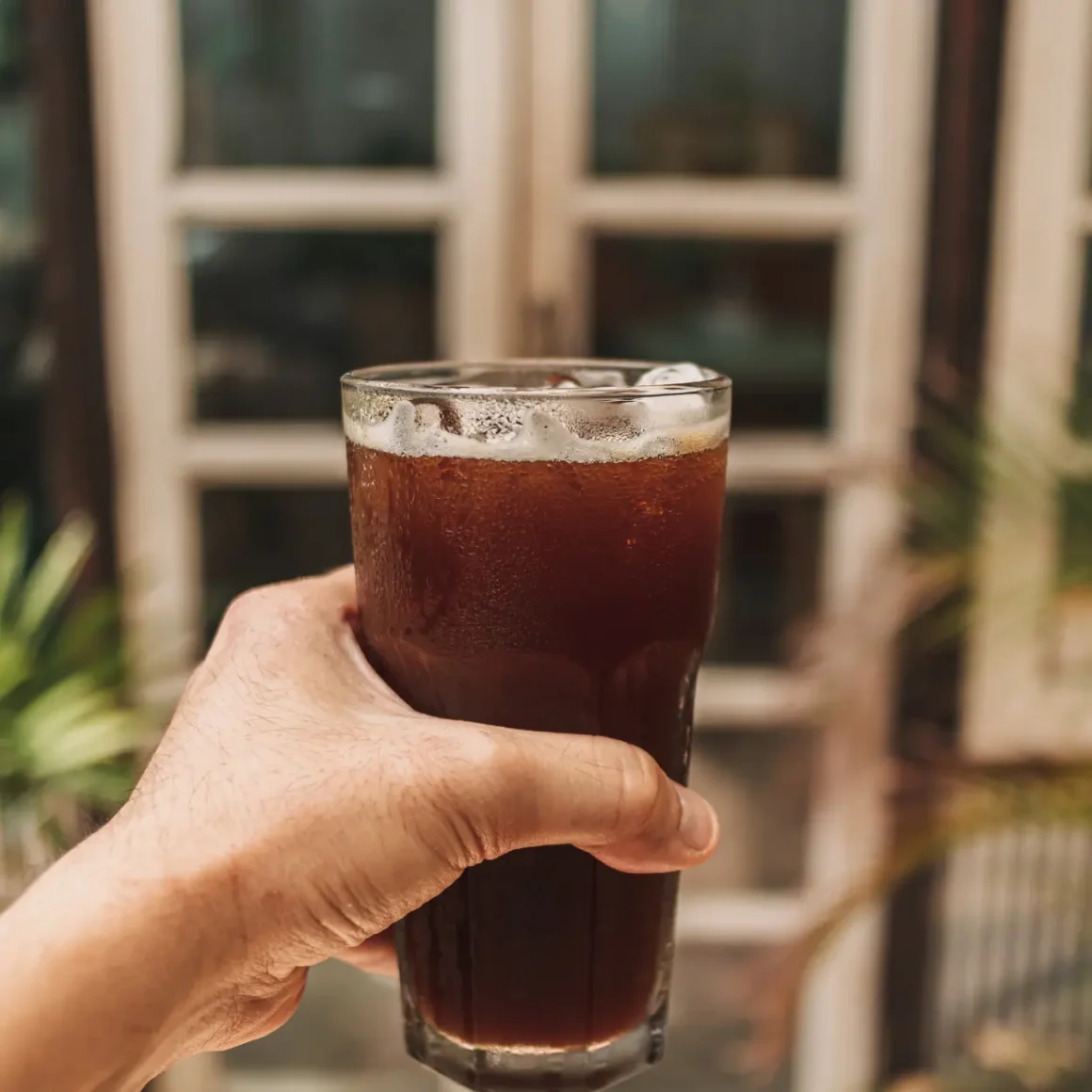
This delectable beverage is renowned for its distinct flavor profile, characterized by:
- Smoothness: The cold steeping process results in a smooth, mellow flavor, often preferred by those who find traditional hot coffee too harsh or acidic.
- Sweetness and Low Acidity: This coffee drink tends to be naturally sweeter and less acidic than hot brewed coffee, making it a popular choice for a wider range of palates.
- Flavor Intensity: Depending on the coffee-to-water ratio and steeping time, this type of brew can range from mild to highly concentrated, offering versatility in strength and flavor.
- Chocolate and Nutty Notes: Many cold brews exhibit pronounced chocolatey or nutty undertones, depending on the beans used.
Nitro Cold Brew Flavor Characteristics
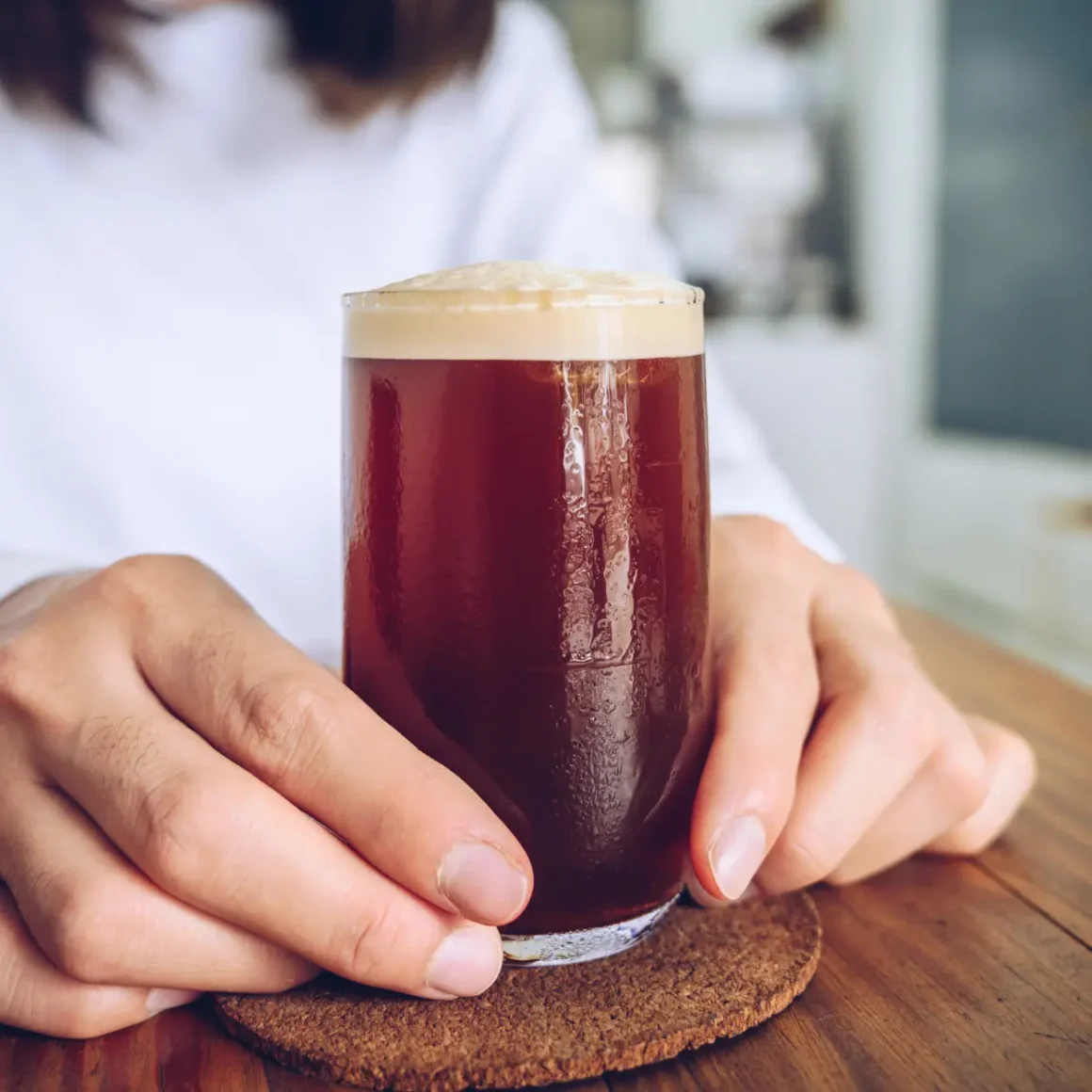
Nitro coffee has additional flavor traits:
- Creamy Texture: The infusion of nitrogen adds a creamy texture, often compared to that of stout beers, enhancing the overall mouthfeel.
- Enhanced Sweetness and Smoothness: The nitrogen not only changes the texture but also seems to elevate the perceived sweetness and smoothness of the coffee, without the need for added sugar.
- Richness: The velvety texture combined with the natural coffee flavors creates a richer, more indulgent beverage.
Factors Influencing Flavor
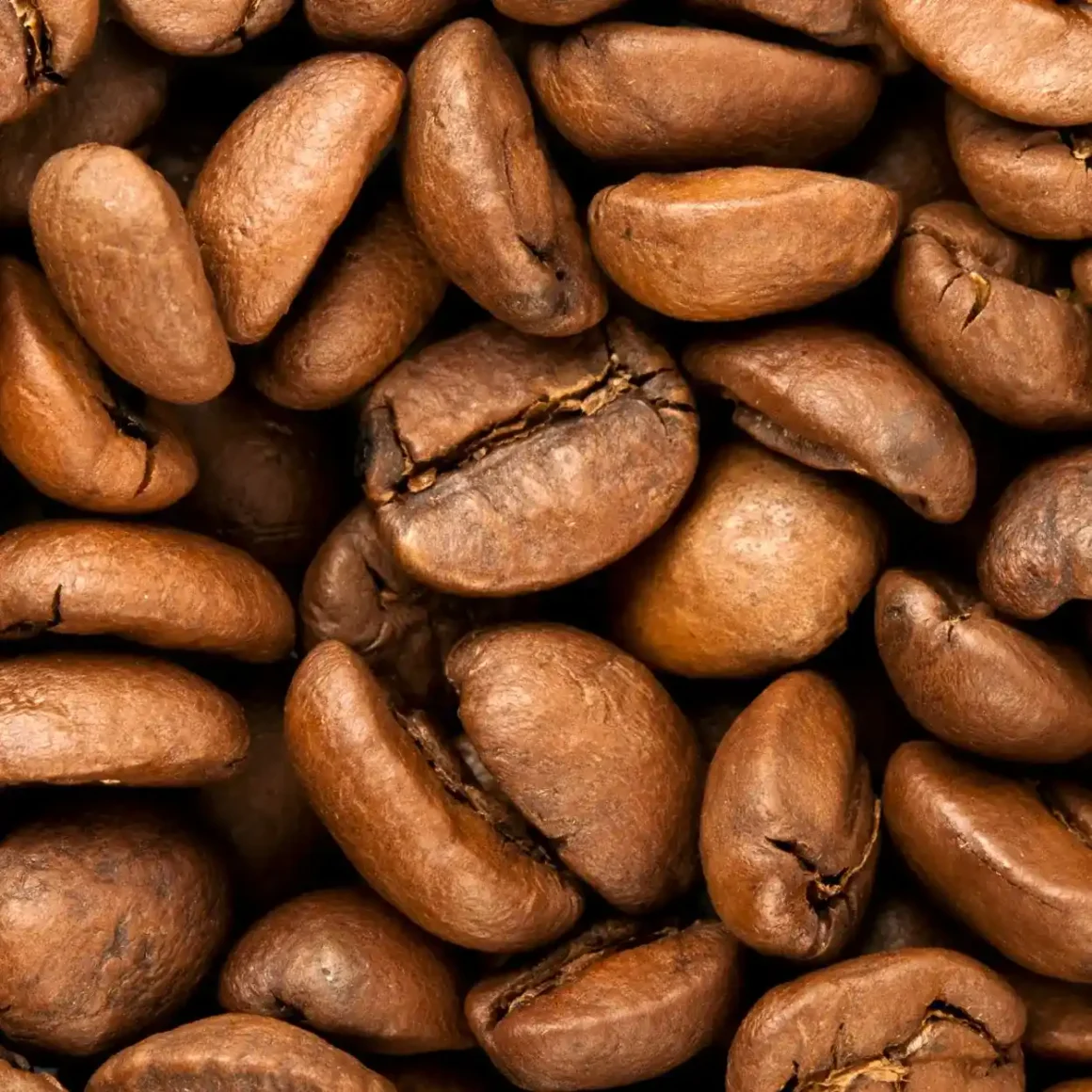
Several factors play a crucial role in shaping the flavor of both coffee beverages:
- Coffee Bean Quality and Roast: The type of beans and the roast level significantly impact the flavor. Lighter roasts tend to be more acidic and fruity, while darker roasts are more robust and chocolatey.
- Grind Size: Coarser grinds are ideal for cold brew to prevent over-extraction and bitterness.
- Steeping Time: Longer steeping times result in stronger flavors. However, over-steeping can lead to unwanted bitterness.
- Water Quality: The purity and mineral content of water can affect the extraction process and overall taste. (2)
- Nitrogen Infusion: The process of infusing nitrogen alters the texture and amplifies the inherent flavors of the coffee.
Both coffee drinks offer unique flavor experiences, appealing to a wide range of tastes and preferences. Understanding these characteristics helps in appreciating and selecting the right coffee for individual taste.
Serving Style
The way coffee is served can greatly enhance its enjoyment, and this is especially true for cold brew and nitro coffee. Each offers a unique serving style that contributes to its overall experience.
Serving Cold Brew
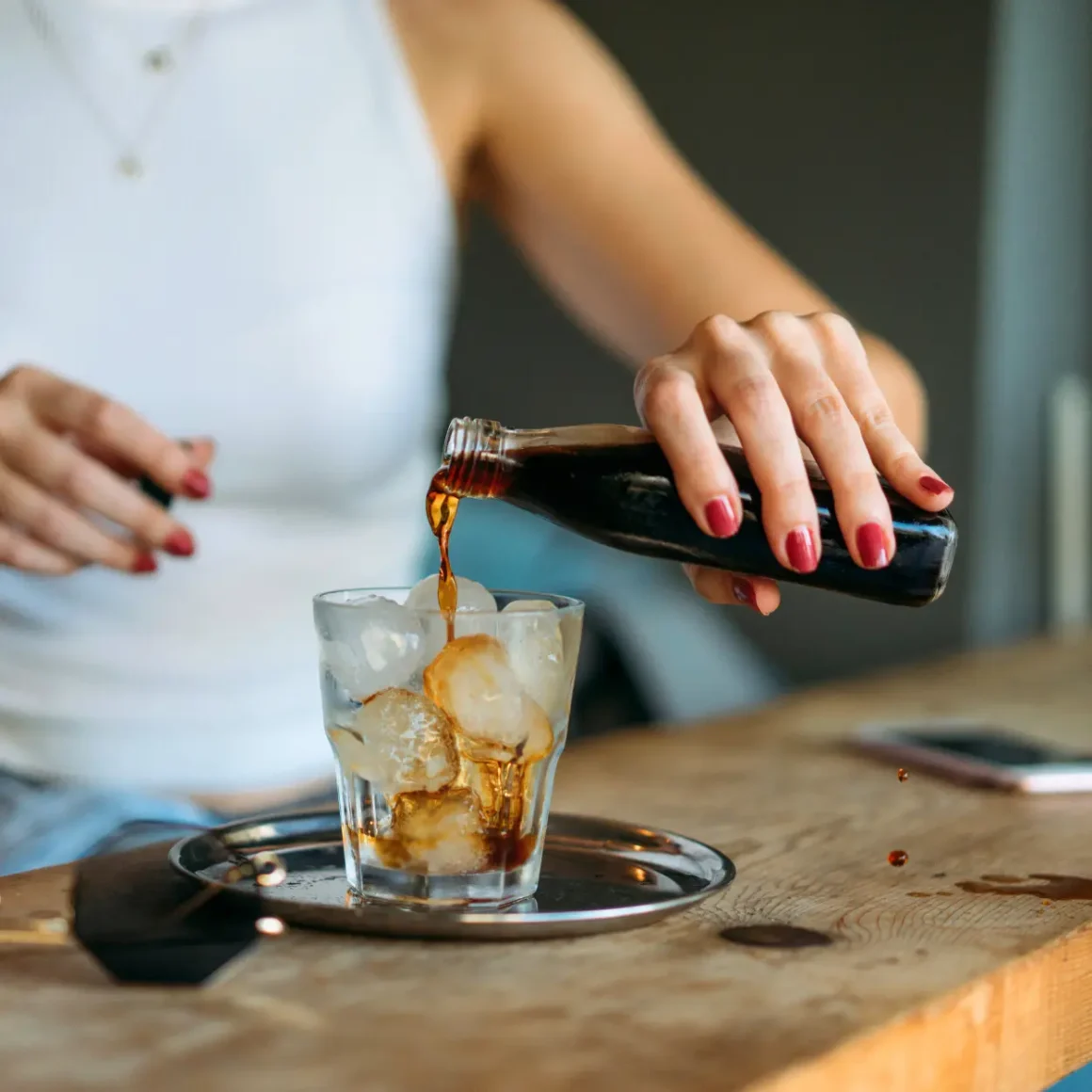
This delectable beverage is typically served in a manner that highlights its refreshing and versatile nature:
- Over Ice: Most commonly, this delightful beverage is served over ice, making it an ideal refreshment for warmer days.
- Dilution Options: It can be diluted with water or milk according to personal preference, which allows for a range of flavor strengths.
- Custom Additions: Sweeteners, syrups, or flavorings can be added to tailor the drink to individual tastes.
- Serving Containers: This drink is often served in a variety of containers, from classic mason jars to tall glasses, enhancing the casual and refreshing vibe of the drink.
The Nitro Cold Brew Experience
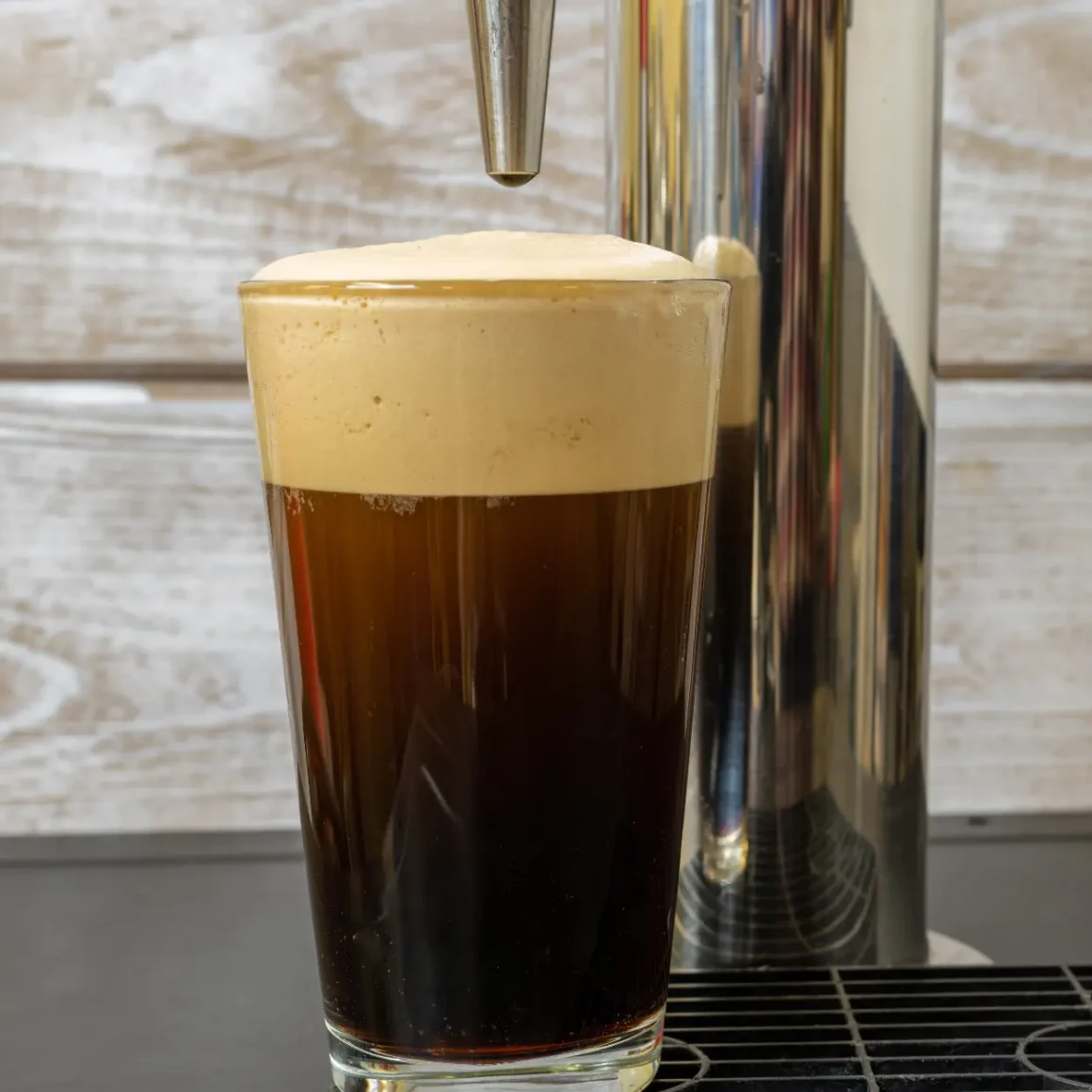
The serving of this coffee drink is more specific, focusing on its unique characteristics:
- Tap Serving: This drink is typically served from a tap, similar to certain types of beer, which maintains its creamy texture and cascading visual effect.
- No Ice: It’s usually served without ice to preserve the creamy head formed by the nitrogen infusion.
- Minimal Additions: Unlike regular cold brew, this beverage is less commonly customized with additives, as the nitrogen infusion itself enhances the flavor and texture.
Presentation and Serving Differences
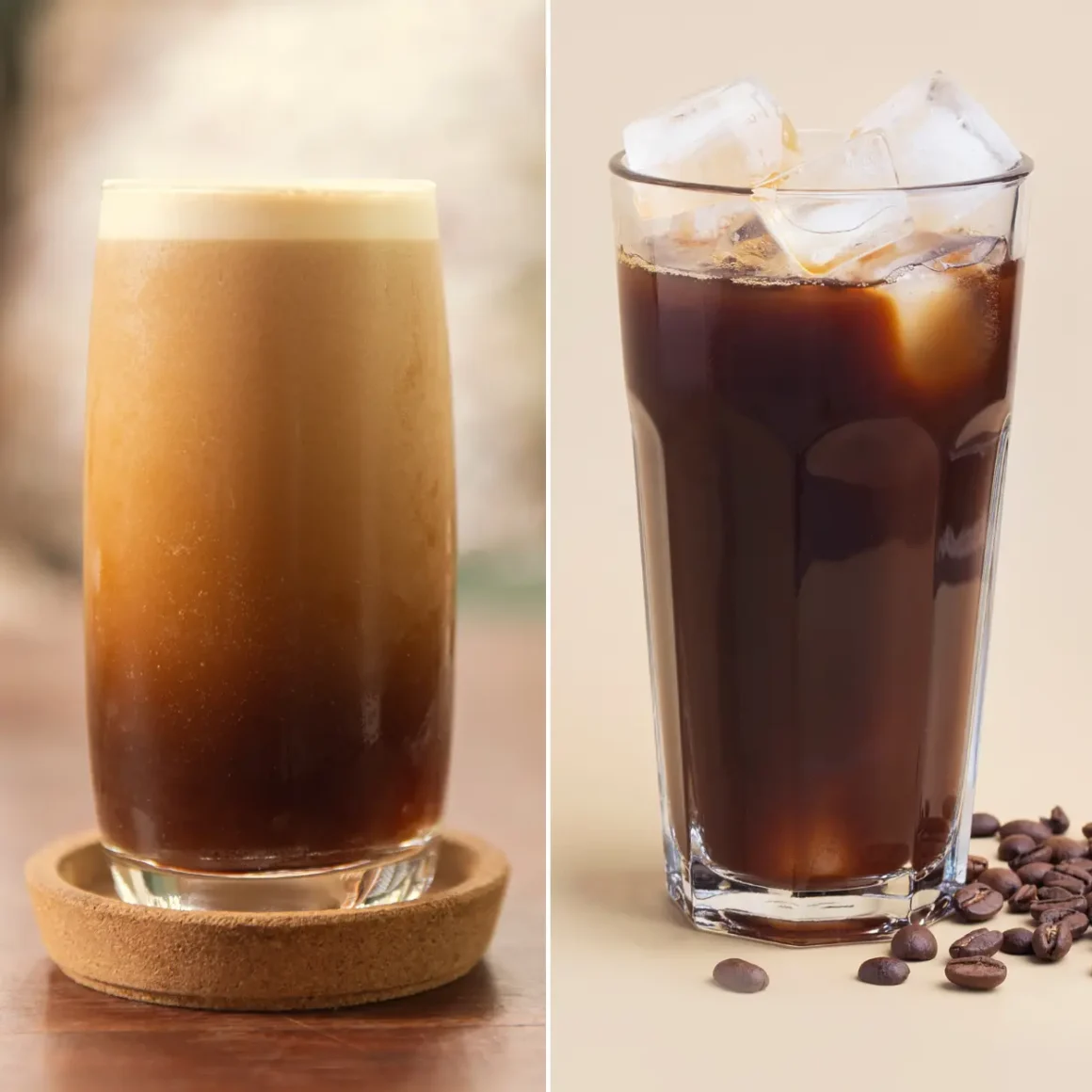
The presentation of these coffee drinks highlights their distinct serving styles:
- Visual Appeal: Nitro cold brew’s cascading effect and creamy head offer a visually appealing presentation, often served in clear glasses to showcase this feature.
- Texture and Temperature: Cold brew’s over-ice serving method makes it more chilled and refreshing, whereas the nitrogen in nitro coffee provides a smooth, velvety texture.
- Serving Equipment: Standard cold pressing doesn’t require special equipment for serving, while the nitro version needs a tap system for its distinctive presentation.
- Cultural Perception: Cold brew is often seen as a casual, everyday drink, while the nitro coffee version is viewed as more unique and artisanal.
In summary, while both drinks are cold coffee beverages, their serving styles differ significantly. Cold brew offers versatility and customization, whereas nitro coffee provides a unique sensory experience focused on texture and presentation.
Caffeine Content and Health
The caffeine content in coffee is a major factor for many drinkers, influencing both their choice of coffee and its effects on health. Both of these coffee drinks, while similar in some aspects, have differing caffeine levels and health implications.
Caffeine Levels in Cold Brew
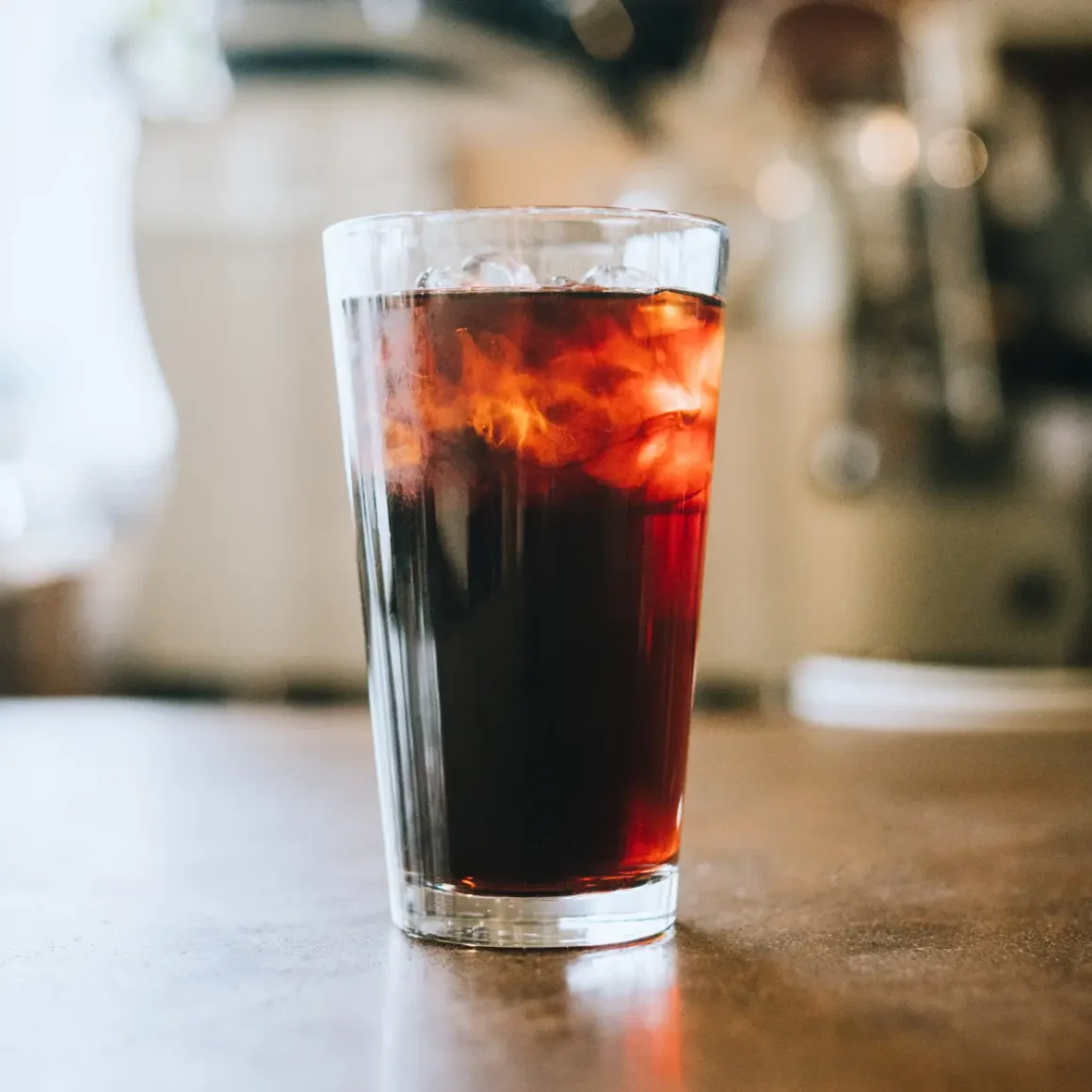
The cold brew coffee caffeine content varies but is generally higher than that of traditional hot-brewed coffee. This is due to several factors:
- Concentration: This type of brew is frequently prepared in a concentrated form, featuring a higher ratio of coffee to water compared to hot brewing methods. This results in a higher caffeine content per serving, typically amounting to approximately 200 mg of caffeine per 16 ounces.
- Steeping Time: The extended steeping time of this beverage (12-24 hours) allows for more caffeine extraction from the coffee grounds.
- Dilution: The final caffeine content can vary based on how much the concentrate is diluted with water or milk when served.
Caffeine in Nitro Coffee
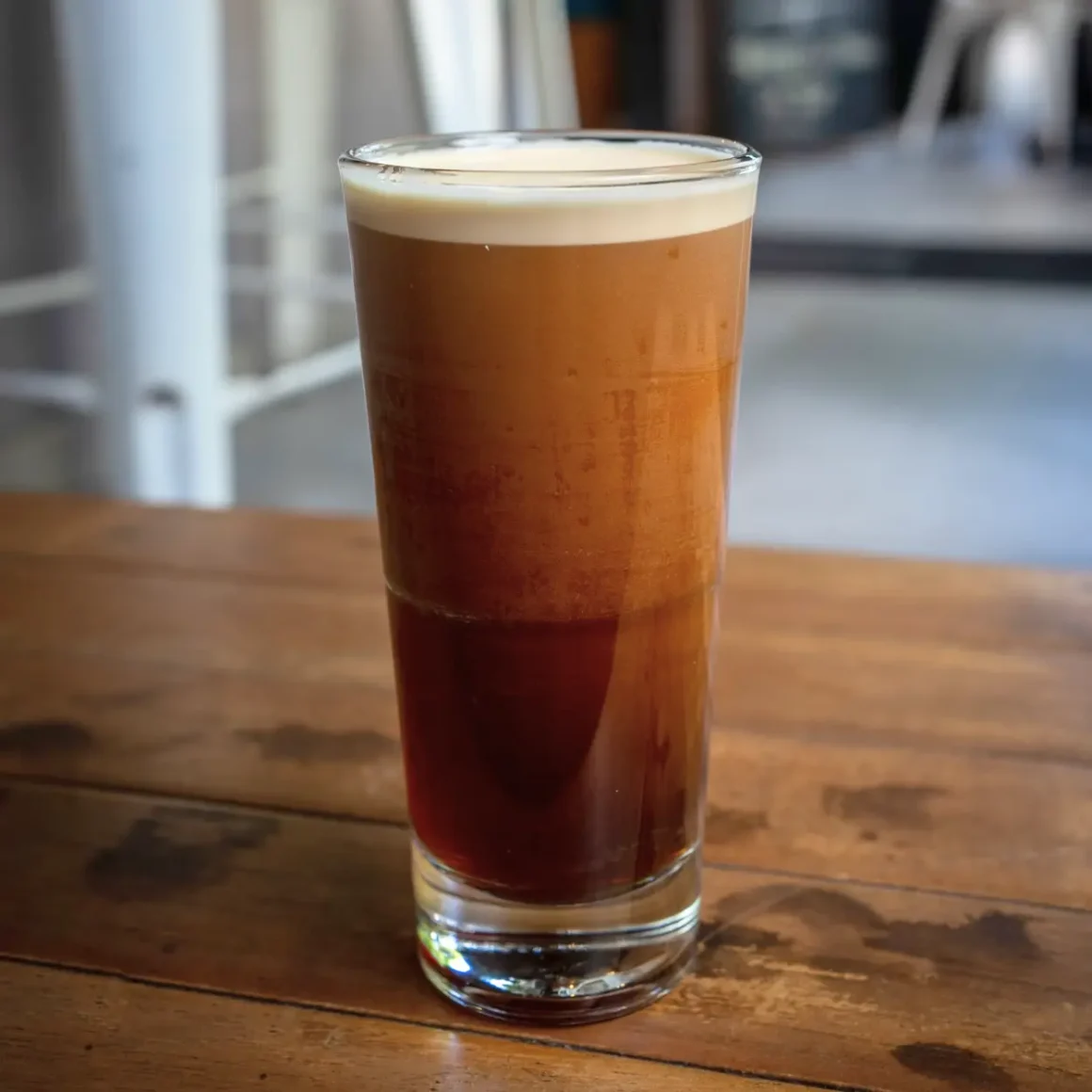
This beverage typically starts with a cold pressing base, so the caffeine in nitro coffee is similar. However, the serving size for nitro coffee is often smaller due to its richness, which can affect the total caffeine intake:
- Base Concentrate: Since it’s based on cold-pressing concentrate, the initial caffeine level is high.
- Serving Size: Nitro coffee is often served in smaller quantities, which can result in a lower total caffeine dose per serving.
Health Considerations and Benefits
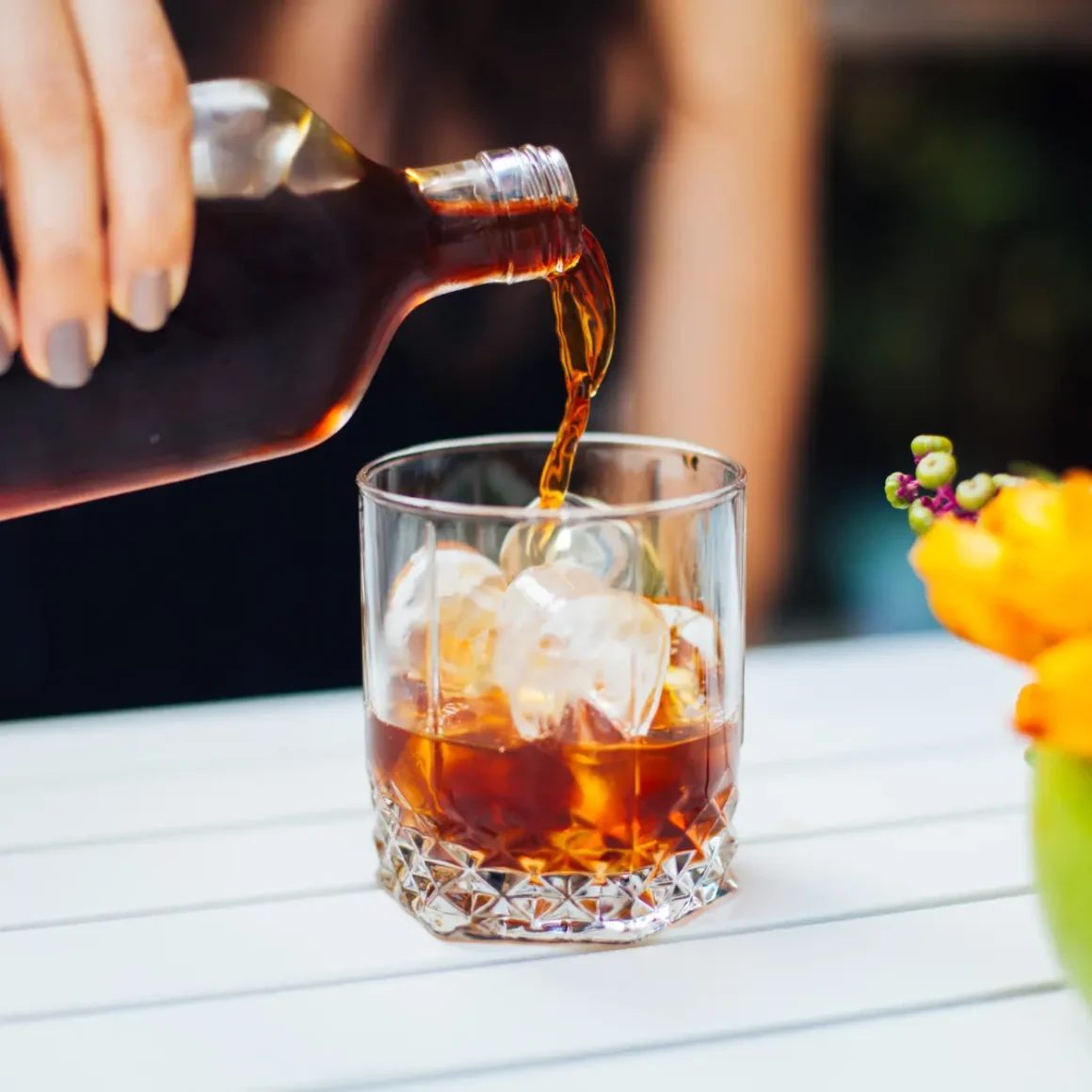
Both coffee drinks have health aspects and benefits worth considering:
- Reduced Acidity: Cold pressing methods result in lower acidity, which can be gentler on the stomach and beneficial for those with acid reflux or sensitive stomachs.
- Natural Sweetness: The natural sweetness of both beverages can reduce the need for added sugars, aligning with healthier dietary preferences.
- Hydration and Refreshment: Being served cold, these beverages can be more hydrating and refreshing, especially in hot weather.
- Antioxidants: Coffee in general is a good source of antioxidants (3), and the longer extraction process of this brew type might even enhance this aspect.
- Caffeine Sensitivity: Given the higher caffeine content in cold brew coffee, individuals with caffeine sensitivity should moderate their intake.
To sum up, while both beverages offer distinct experiences in terms of taste and texture, they both generally contain higher levels of caffeine compared to traditional hot coffee. However, the exact content can vary based on preparation and serving methods. Additionally, their reduced acidity and potential health benefits make them appealing choices for a range of coffee enthusiasts.
Conclusion
In conclusion, when it comes to choosing between these coffee beverages, it ultimately boils down to personal preference in flavor, texture, and presentation. The Nitro brew, with its creamy texture and unique cascading effect, offers a novel coffee experience that is both visually and tastefully distinct. On the other hand, traditional cold brew provides a smoother, more mellow flavor that can be tailored in strength and is often favored for its versatility and refreshment qualities. Understanding the key differences in the nitro vs cold brew debate enables coffee enthusiasts to make an informed choice based on their taste preferences and the kind of coffee experience they seek.
FAQ
How is nitro cold brew made compared to cold brew?
The Nitro brew is made by infusing cold brew coffee with nitrogen gas, often using a tap system, unlike regular cold pressing which doesn’t require gas infusion.
Are there differences in flavor between both coffee drinks?
Yes, the nitro-infused coffee typically has a richer, smoother taste with a creamy mouthfeel, while the cold brew is noted for its mellow and slightly sweet flavor.
What are the serving styles for nitro cold brew and cold brew coffee?
The Nitro brew is often served from a keg or tap without ice to maintain its frothy head, while the cold brew is usually served over ice, sometimes diluted with water or milk.
Does nitro coffee have more caffeine?
Nitro coffee generally has a caffeine content similar to cold brew, but serving sizes are often smaller, which can affect total caffeine intake.




